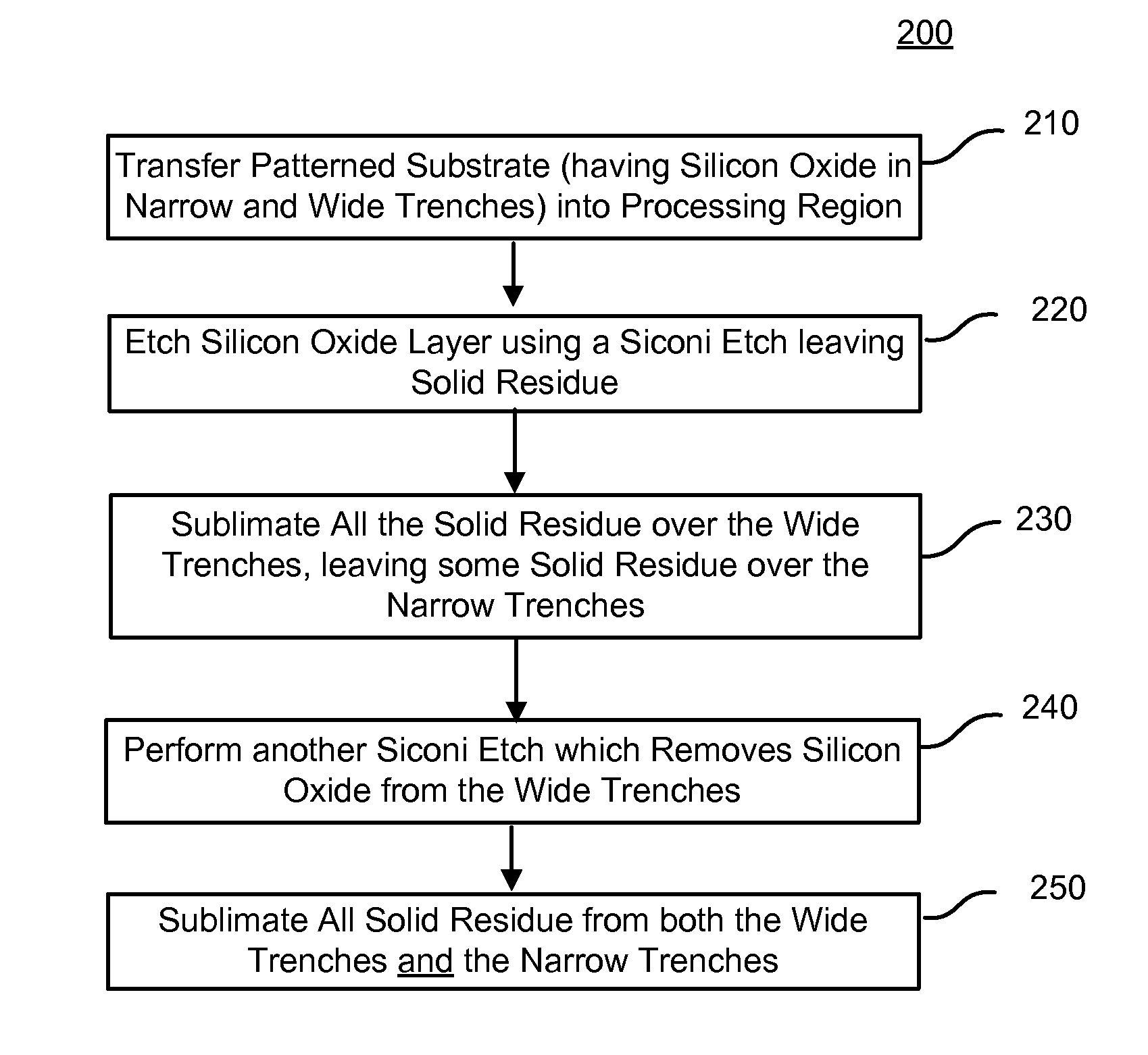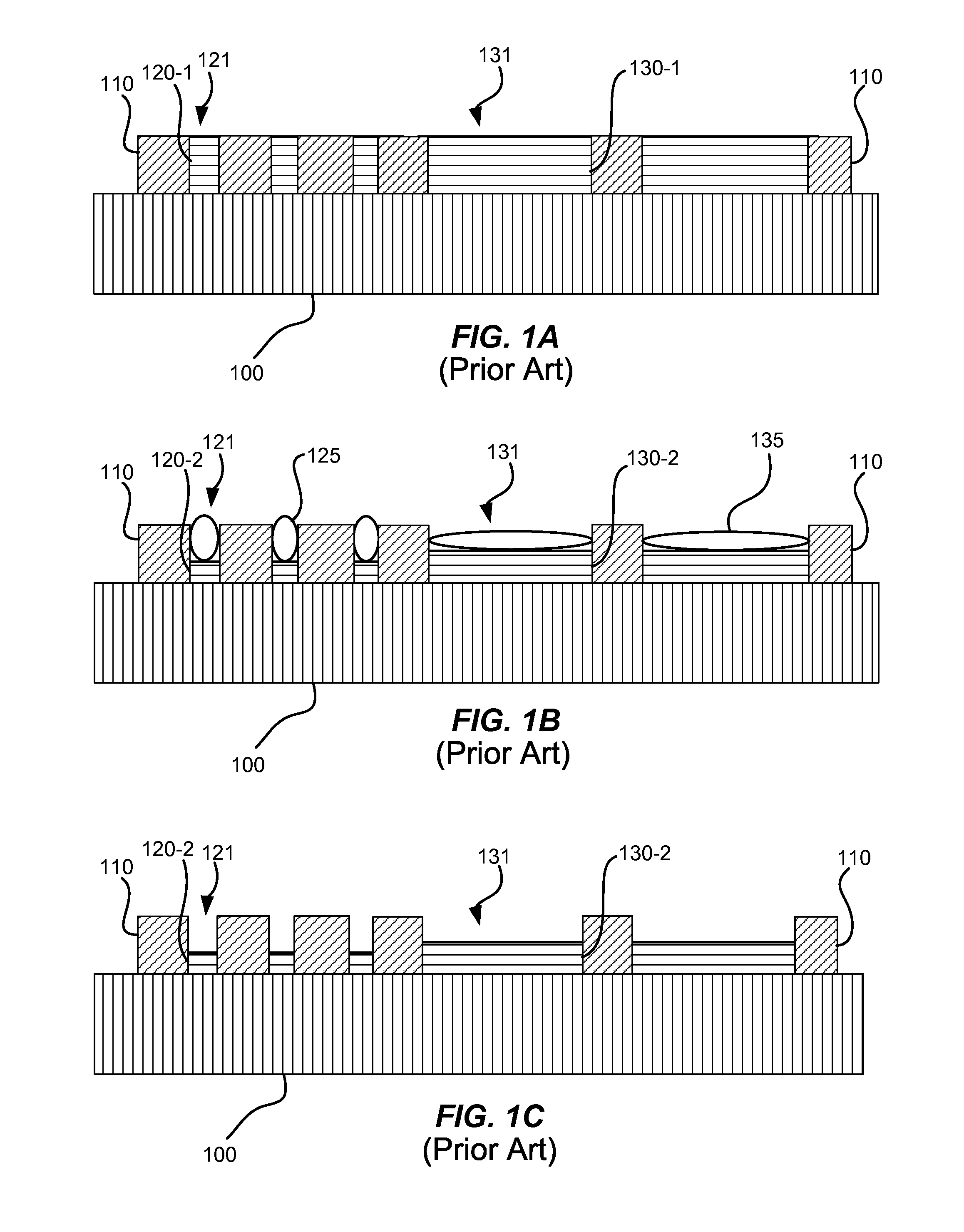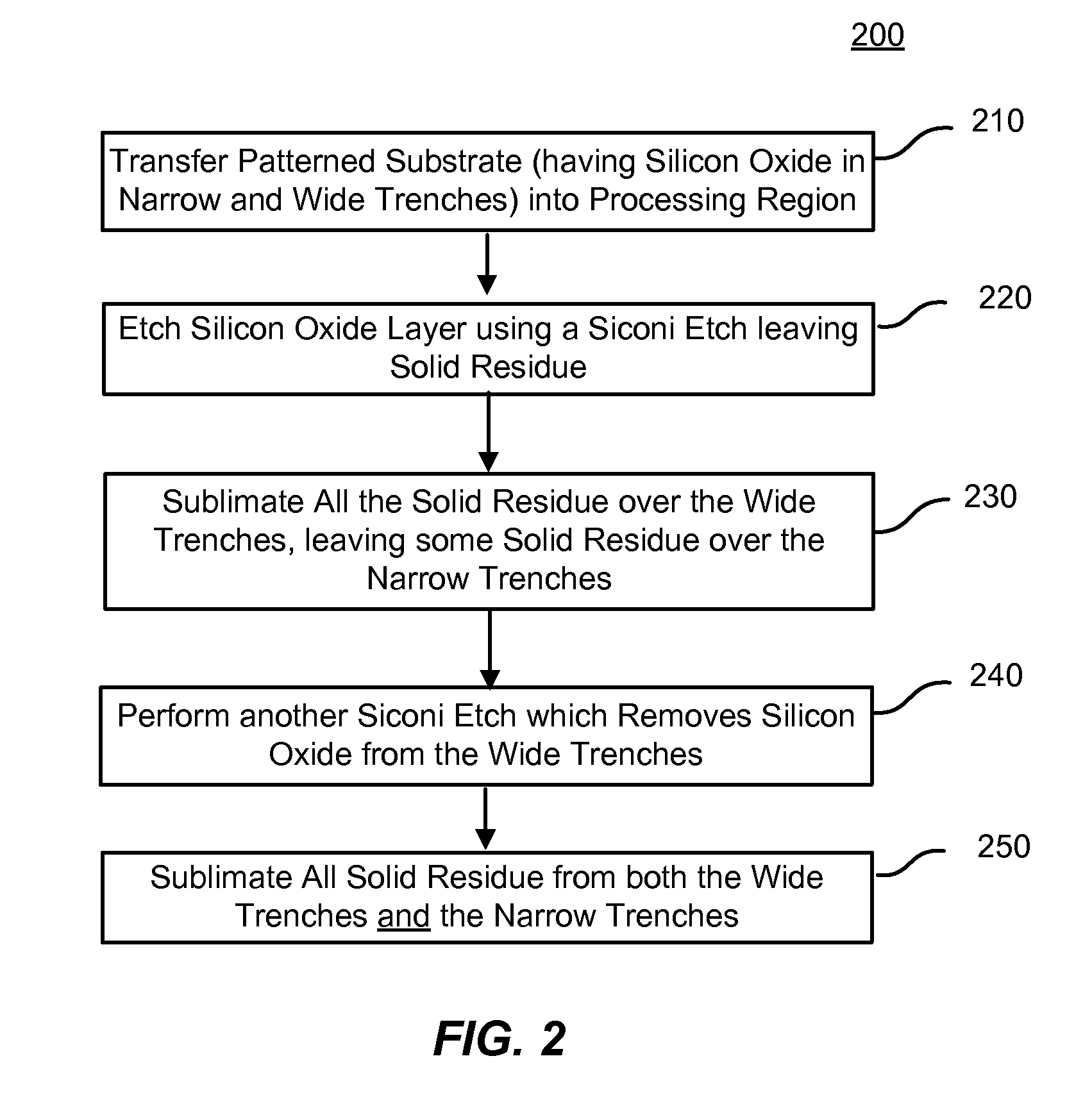Invertable pattern loading with dry etch
a technology of invertable pattern and dry etching, applied in the direction of electrical discharge tubes, decorative surface effects, electrical apparatus, etc., can solve the problems of slow etching rate, open areas and wide trenches that do not readily etch silicon,
- Summary
- Abstract
- Description
- Claims
- Application Information
AI Technical Summary
Benefits of technology
Problems solved by technology
Method used
Image
Examples
Embodiment Construction
[0016]A method of etching silicon oxide from a narrow trench and a wide trench (or open area) is described which allows the etch in the wide trench to progress further than the etch in the narrow trench. The method includes two dry etch cycles. The first dry etch cycle involves a low temperature and / or abbreviated sublimation step which leaves solid residue in the narrow trench. The remaining solid residue inhibits etch progress in the narrow trench during the second dry etch cycle allowing the etch in the wide trench to overtake the etch in the narrow trench.
[0017]Siconi™ etch processes are an example of a dry etch process and have used a hydrogen source of ammonia (NH3) and a fluorine source of nitrogen trifluoride (NF3) which together flow into a remote plasma system (RPS). The plasma effluents created therein are flowed into a substrate processing region. A pattern loading effect may be observed when Siconi™ etch processes are applied to patterned wafers. FIG. 1A depicts a heter...
PUM
| Property | Measurement | Unit |
|---|---|---|
| width | aaaaa | aaaaa |
| width | aaaaa | aaaaa |
| temperature | aaaaa | aaaaa |
Abstract
Description
Claims
Application Information
 Login to View More
Login to View More - R&D
- Intellectual Property
- Life Sciences
- Materials
- Tech Scout
- Unparalleled Data Quality
- Higher Quality Content
- 60% Fewer Hallucinations
Browse by: Latest US Patents, China's latest patents, Technical Efficacy Thesaurus, Application Domain, Technology Topic, Popular Technical Reports.
© 2025 PatSnap. All rights reserved.Legal|Privacy policy|Modern Slavery Act Transparency Statement|Sitemap|About US| Contact US: help@patsnap.com



